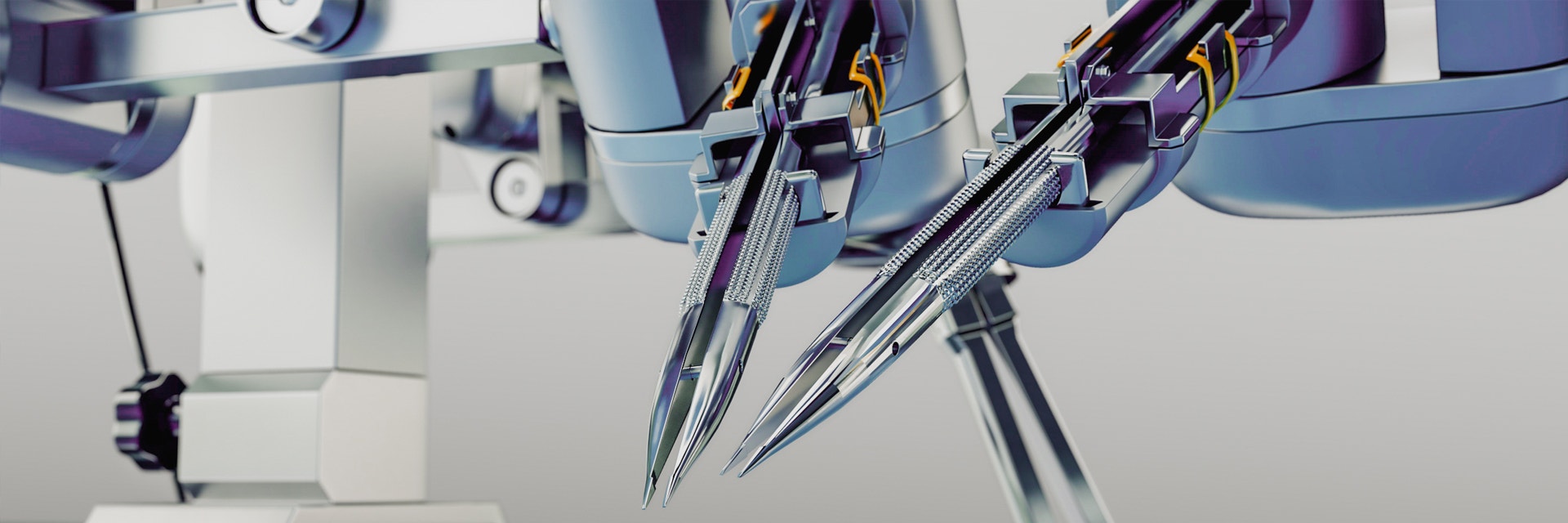EXPERT INSIGHT
We Love Personalization in Medtech — but Don’t Forget the Simple Parts
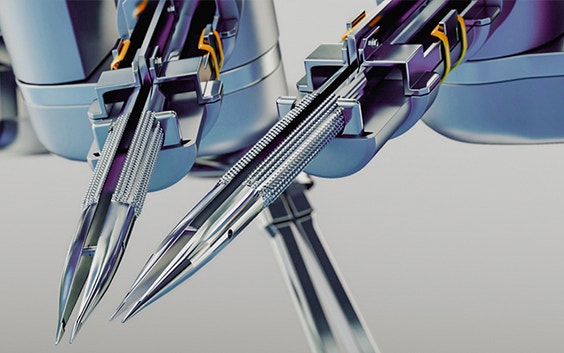
It’s perfectly understandable that patient-specific implants and other 3D-printed innovations get all the headlines. But today, we’re doing something a little different — shining a light on medtech’s "Unsung Heroes" and explaining why the industry can’t afford to ignore these essential, less complicated applications.
The medical industry has never been one to stand still. New discoveries, new ideas, and an endless search for innovation drive it forward. 3D printing has undoubtedly played a role, improving patient outcomes around the world. Personalized implants, surgical guides, and prosthetics are just a few areas in which the technology has found its home.
While these patient-specific applications are undoubtedly successful, they tend to focus primarily on design benefits. 3D printing’s design freedom is unmatched, after all, and the technical drivers for adopting the technology speak for themselves. However, the economic drivers are equally important — as are the benefits they bring to both medical devices and the health facilities that purchase their products — and they’re often overlooked.
Finding Medtech’s ‘Unsung Heroes’
Applications based on these economic drivers represent something of an untapped opportunity for many medtech manufacturers, and it's one we want them to grab with both hands. Core examples include products or parts used in general-use diagnostic or treatment tools and hospital equipment. 3D printing bureaus are already positioned to produce them in repeatable runs, ensuring every part meets the stringent quality standards you need.
These parts are just as important in healthcare as the patient-specific devices enjoying their well-earned time in the spotlight. Every illness requires diagnosis, treatment, and any equipment that enables the two. Turning to 3D printing allows providers to meet this need while gaining all the advantages — both economic and technical — that come with it.
Perhaps first among these advantages is the absence of minimum order quantities (MOQs). Whether a 3D printer produces one part or 100, the cost per unit remains the same, meaning there’s no need for healthcare providers to order more than they require at any given time. Due to the digital nature of the technology, manufacturers also avoid retooling and retraining employees to produce different parts, helping to lower costs on their end, too. This ultimately makes it cheaper to produce a series of simple parts with 3D printing than with traditional manufacturing techniques.
This is particularly useful when a medical facility needs an emergency spare part to repair a piece of hospital equipment or for medtech companies that produce unique diagnostic tools in limited numbers. Thanks to the freedom of design in 3D printing, they can also produce parts with complex geometries much more easily than with alternatives such as injection molding. There’s no unnecessary storage costs, no risk of obsolescence, and less waste.
A growing portfolio
Today, Materialise produces more than 150,000 3D-printed parts per year for the medtech industry that fit into this category of ‘Unsung Hero.’ Indeed, 28 of the world’s top 30 medtech manufacturers work with us at various stages of the product development cycle, from design to series production. With many examples of small- to mid-size series manufacturing success stories, it's clearly an opportunity that both 3D printing companies and the medtech industry should pay attention to.
The best proof of this potential is found in examples like Sartorius. Renowned for the quality of their devices, consumables, and services, they're trusted by a wide range of pharmaceutical giants, including GSK, GE Healthcare, and Johnson & Johnson. Since 2018, they’ve worked with Materialise to produce more than 26,000 single-use components, relying on the technology to speed up production times, remove the need for assembly, and produce complex geometries that would not be possible with any other technology.
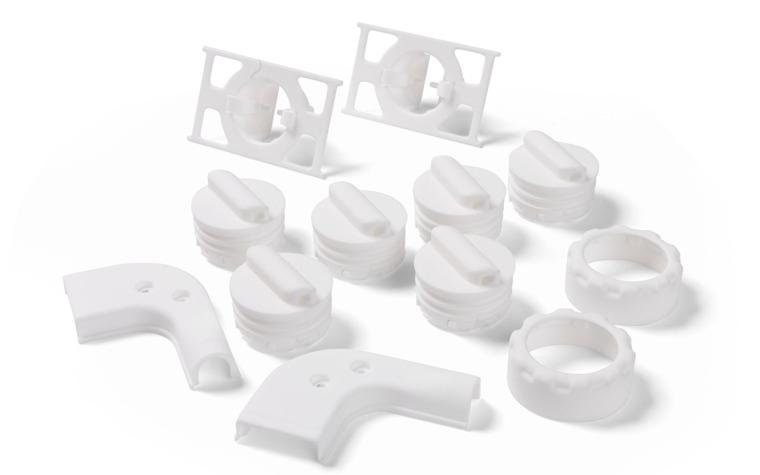

Perhaps more important than the technology itself is the availability of certified materials. In heavily regulated industries like biopharmaceuticals, characteristics such as biocompatibility and cleanability are essential. Materialise now boasts a growing number of options, including PA 12 Medical-Grade, that have passed tests for cytotoxicity, sensitization, irritation, acute systemic toxicity, and material-mediated pyrogenicity.
But it’s not just established medtech manufacturers that can benefit from these advantages. 3D printing has always been a firm favorite for prototyping and rapid iterations, and this industry is no different. It’s an ideal option for startups and scaleups such as MMI, who began their relationship with Materialise by producing a range of prototypes. Fast forward several years, and the company is now known for developing the world’s smallest wristed micro-instruments as well as tremor-reducing and motion-scaling robotic technology for complex microsurgery procedures.
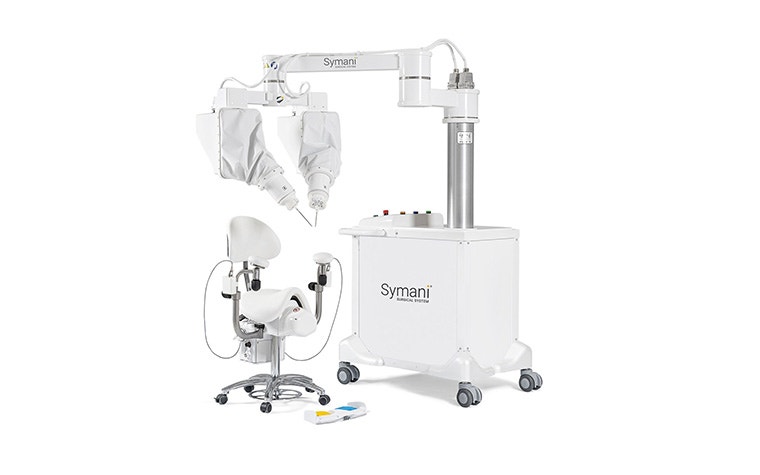

In applications like this, the smallest adjustment can significantly impact performance. With 3D printing, MMI could make improvements and iterate quickly without investing in new molds. These advantages also allowed the company to scale up to series production without concern. Today, MMI works with Materialise to produce end-use parts for its surgical kits and sells its solutions in some of the world’s biggest markets, including the EU and the US.
An opportunity to learn
Knowledge sharing is crucial to success in many collaborative projects, and it's no different here — especially when it comes to quality management. It's a variable and multi-faceted topic that requires input from both sides to get the best results. Medtech companies can work with their 3D printing partners to clarify their industry's requirements, guide innovation, and highlight areas that currently lack solutions.
One of the most important aspects of this relationship is knowing when and where 3D printing is the best option. Materialise and Sartorius work together regularly, and this partnership serves as a great example. With departments dedicated to additive manufacturing and traditional manufacturing methods, Sartorius is known to be technology-agnostic. The team will choose the method that is most suited for the part, only using 3D printing where it makes sense.
3D printing providers can add the most value by communicating and comparing the benefits and costs of different technologies on a case-by-case basis. When companies like Sartorius see that 3D printing is the best fit for their needs, Materialise is ready to learn all they can about the project, ultimately creating a part that meets the industry’s high standards. As a technology- and vendor-agnostic company ourselves, it's an approach we swear by.
Inspired by aerospace
This symbiotic relationship is not unique to medtech. Aerospace, another heavily regulated industry, can serve as a guiding light. Reliability and repeatability are essential requirements here, too, and 3D printing is now proven to meet those standards. The two industries also share a need for small series production; in-cabin parts, spares, and repairs are ideal aerospace applications for reasons similar to those listed above.
Materialise’s work with Airbus is a perfect example. When airlines require parts like custom panels — used to bridge gaps in an airplane’s cabin — the quantities are often reasonably low, and technologies such as injection molding can be both slow and expensive. 3D printing at Materialise offers a faster, more cost-effective alternative. We worked closely with Airbus to produce their first-ever cabin-ready 3D-printed parts, all of which adhered to the industry’s strict production guidelines. Other examples include repair kits for DADO panels, seat bevels, and in-cabin seat blockers — another victory for the simple parts!
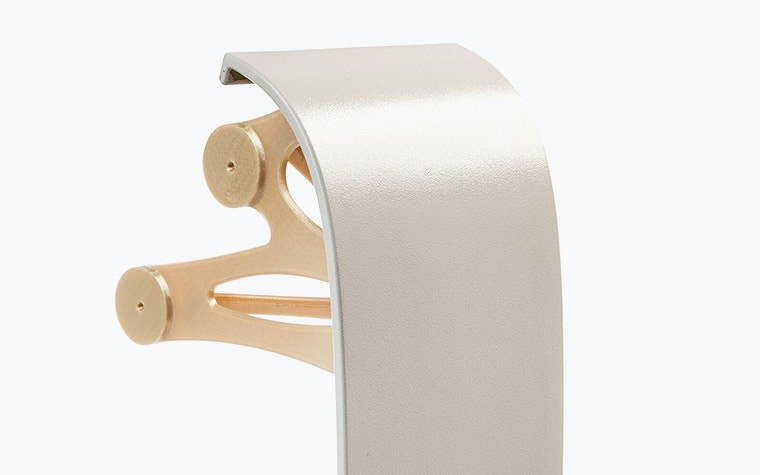

Yet, getting to this stage wasn’t easy. Part qualification was always the biggest hurdle to the industry adopting 3D printing, a barrier that Materialise helped to lower by sharing data from our production line. By providing approved design organizations (DOAs) with the data they needed to qualify their parts, the companies could assess the viability of 3D printing for each application and move closer to producing a part that met the necessary specifications.
The result is what is known as a “data lake”: thousands of performance data points from the parts we’ve printed in the last ten years. This information illustrates the impact of design on mechanical properties, part density, tensile strength, and more. As it continues to grow, users can draw from an ever-deepening well of information to understand the properties of a new design before printing it. It’s an invaluable advantage for 3D printing in the aerospace industry and could be equally important for the medical sector, where repeatability and reliability are just as essential.
The future is simple
So, there it is. We love the impact 3D printing has had on mass personalization. It’s changed the medical industry like few other innovations, but it also adds tremendous value to other applications. 3D printing companies can (and should) work side by side with leaders in medical technology to navigate the strict regulations and deliver cost-effective and convenient solutions, especially when producing unique, low-quantity parts. From the aerospace industry to those success stories that sit closer to home, it’s clear that 3D printing is ready to offer repeatable, reliable series production.
By focusing on these “Unsung Heroes,” we can continue to bring 3D printing’s advantages to medtech providers and the patients who need their parts. It’s an opportunity that’s too good to ignore — even if it seems a little simple.
Share on:
You might also like
Never miss a story like this. Get curated content delivered straight to your inbox.
